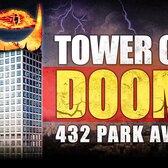Back to the Future seeks to return the bridge to its original iconic state, both architecturally and functionally, and pilot innovations in autonomous mobility and public space design. By removing cars and related ramps, and providing more space for pedestrians, bikes and transit, the bridge will move more people and create a stronger, more sustainable, and more equitable connection between Downtown Brooklyn, Lower Manhattan, and beyond.
Over time, the approach would restore the anchorages to their original form, allowing for public activation, engagement with, and new appreciation of these incredible historic structures. 1950s-era rampways, removed or reprogrammed in segments to create additional pedestrian access to the bridge, will preserve a visual timeline of the bridge's urban history. Rethinking these areas would release 32 acres of land for public and environmental benefit on both sides of the bridge, more than 5x the total area of the Highline, to combat climate change and urban heat increase, and offer recreational spaces and improved waterfront access for adjacent neighborhoods and a growing city.
via Vimeo
Something wrong with this post? Let us know!










